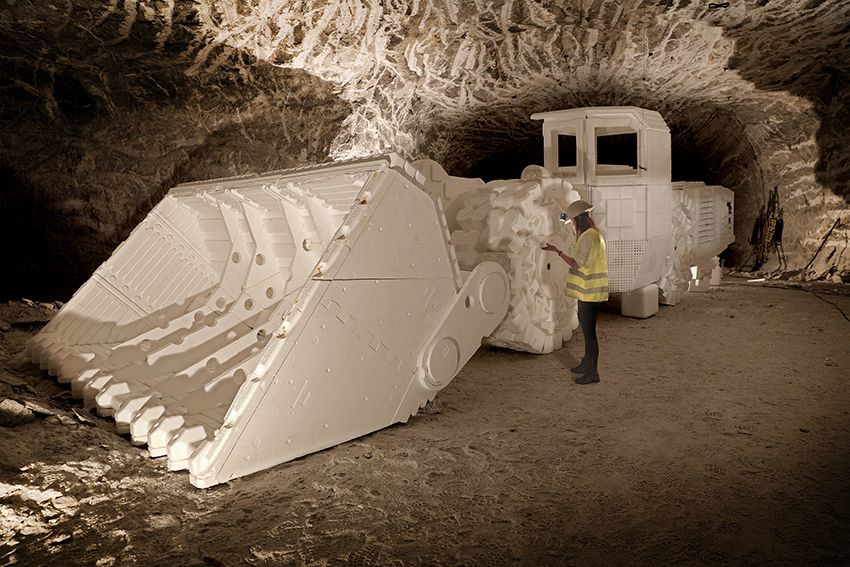
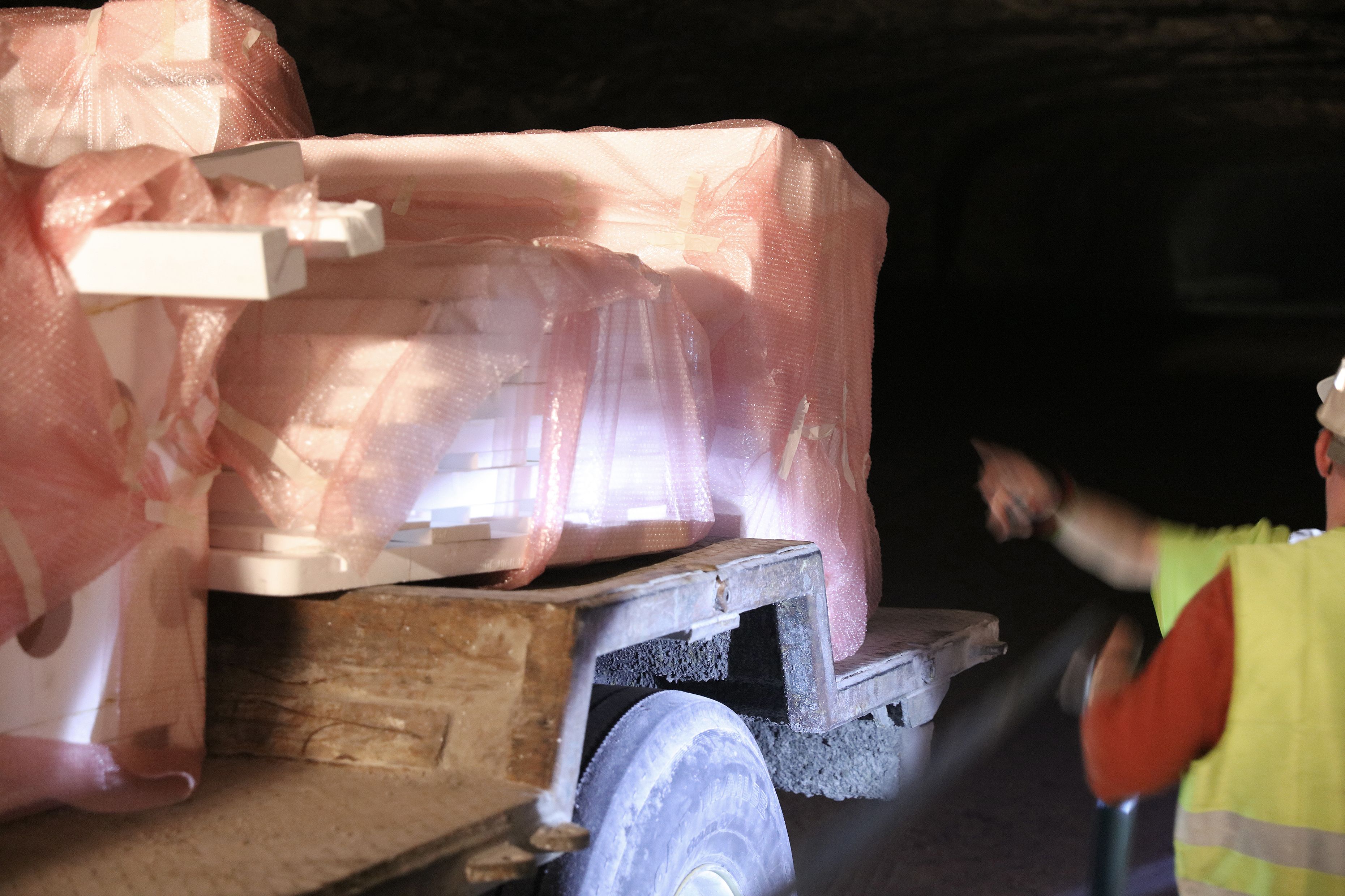
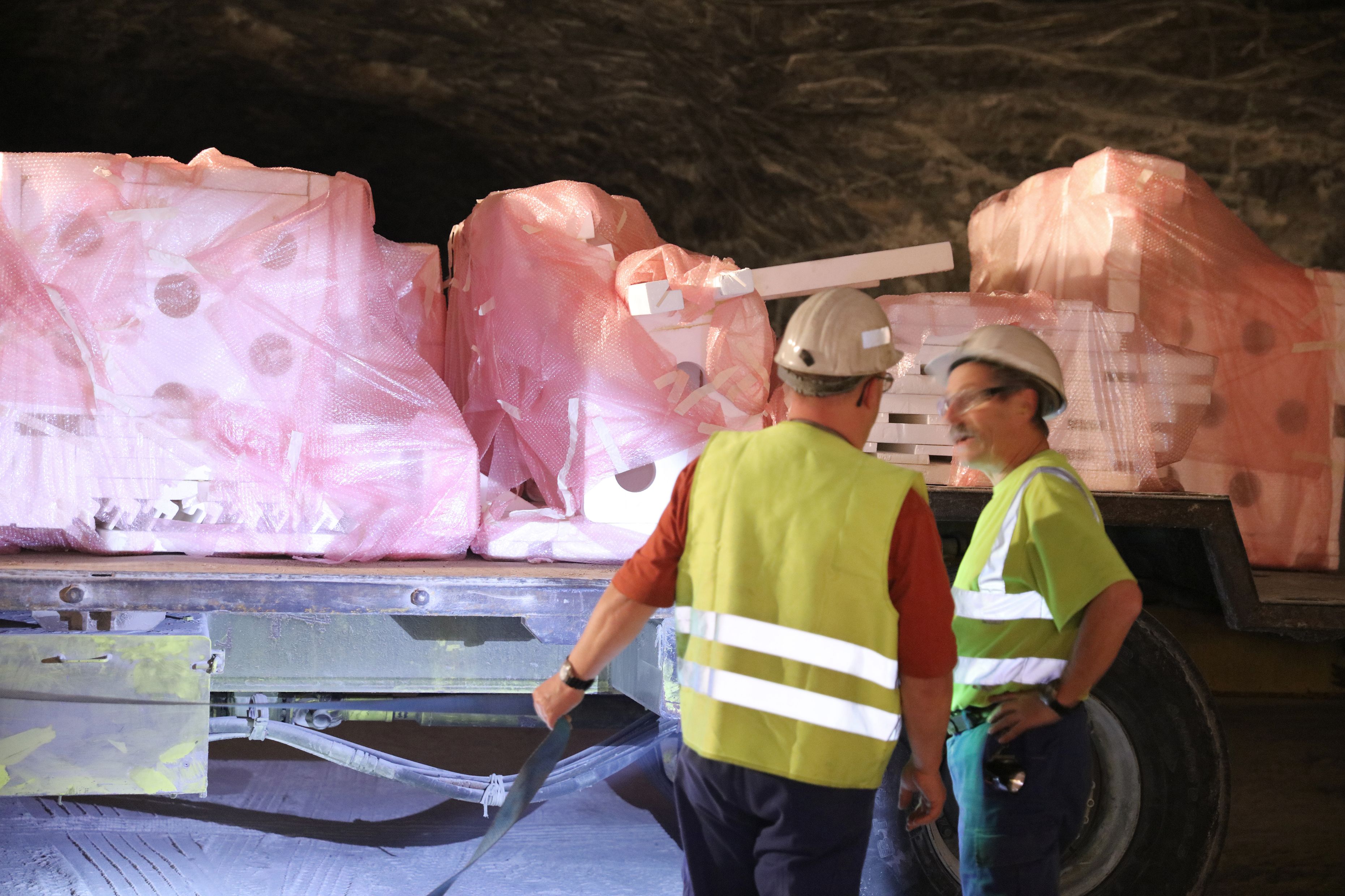
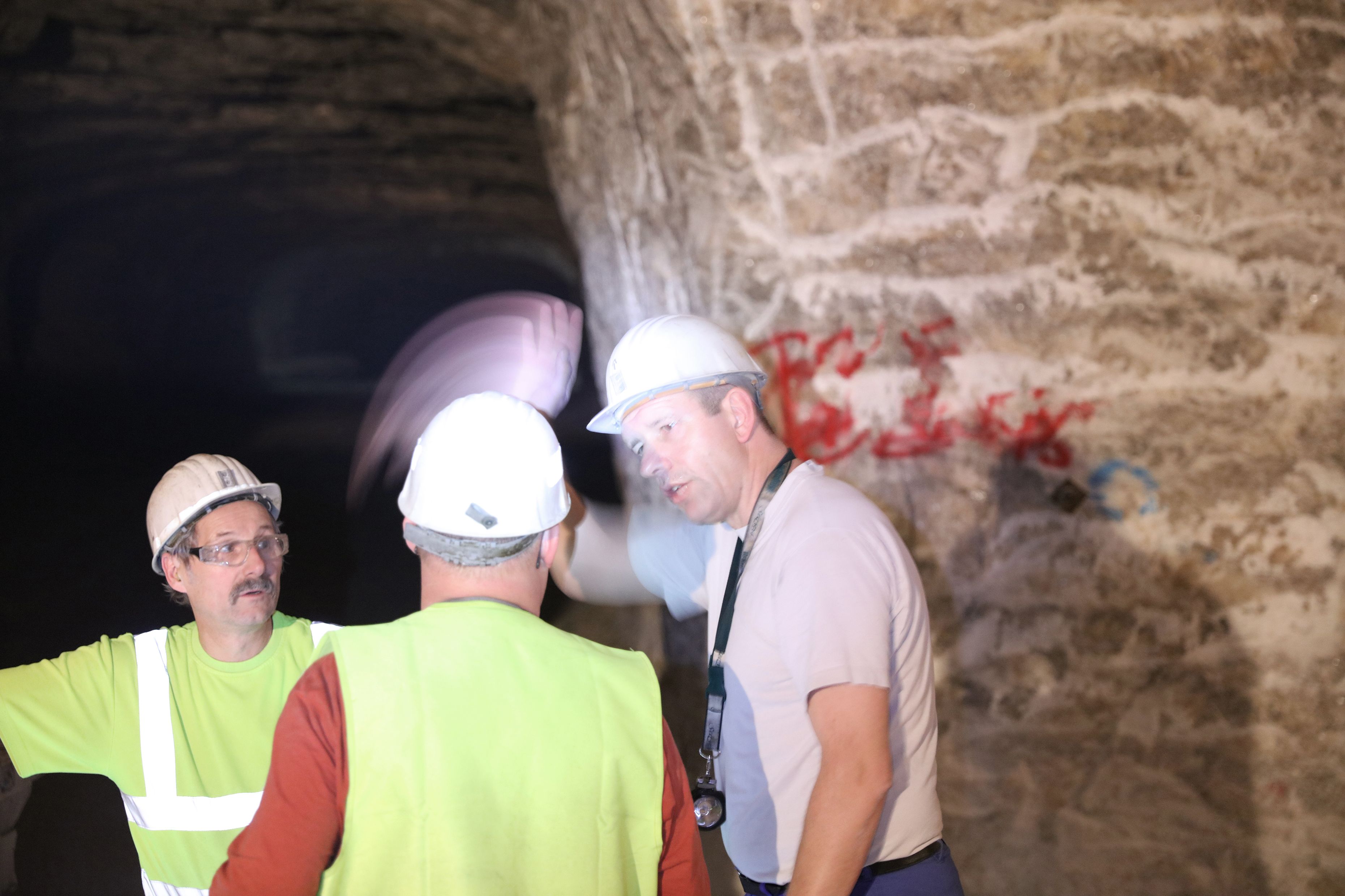
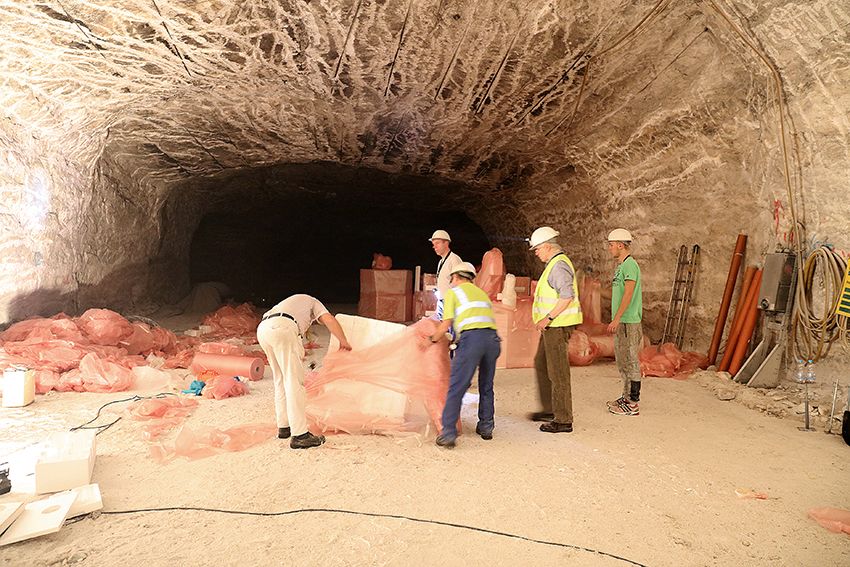
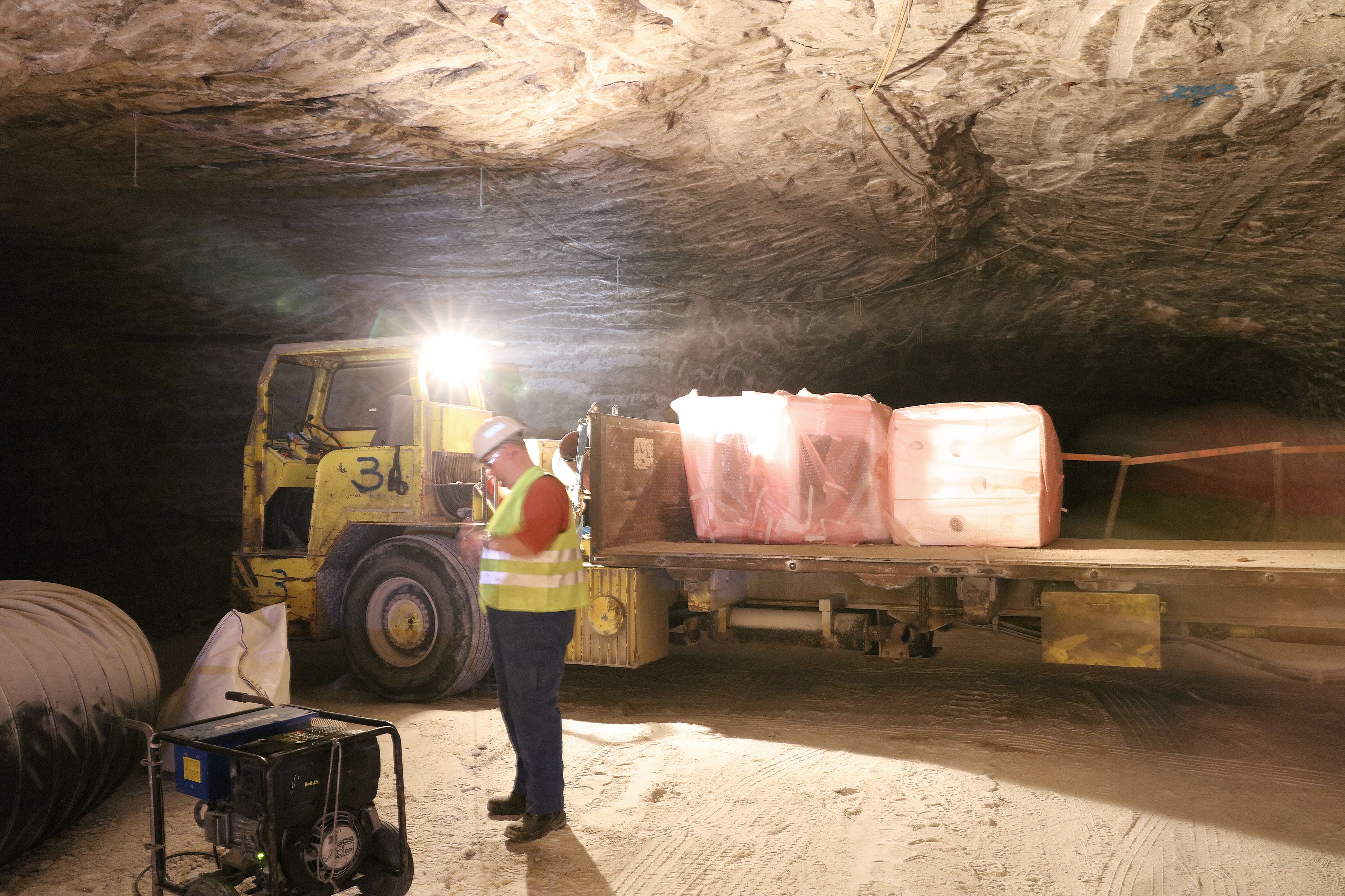
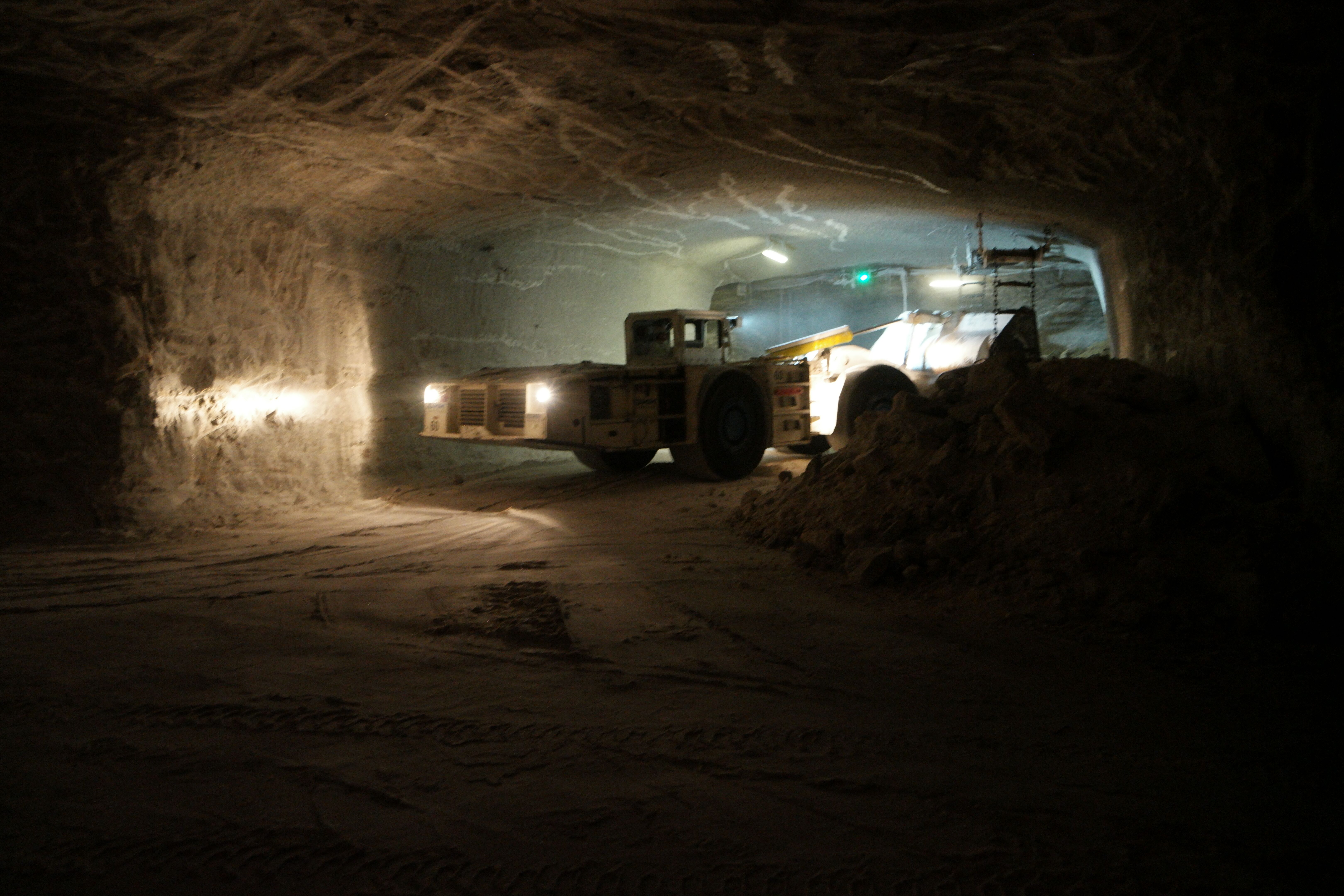
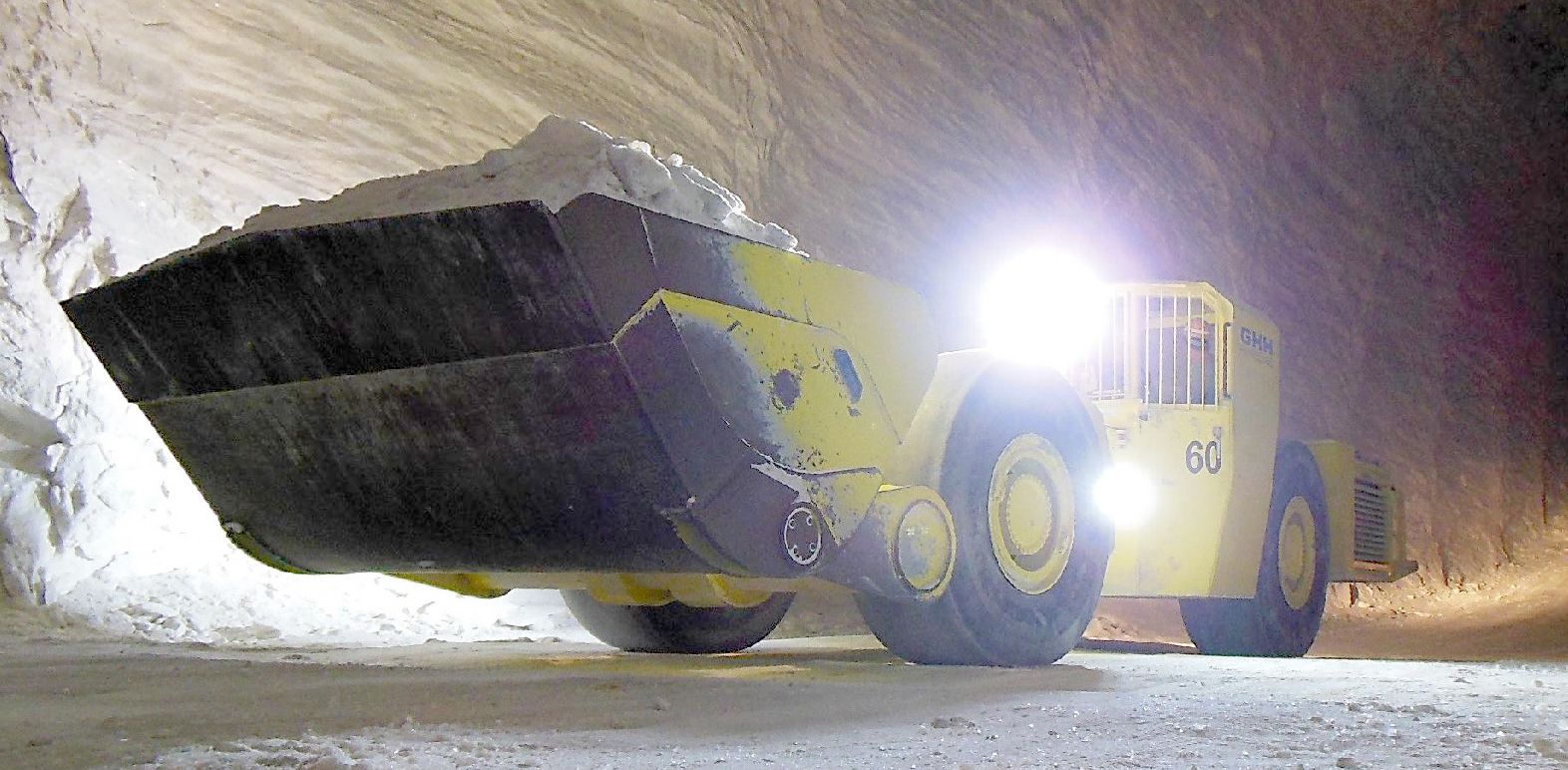
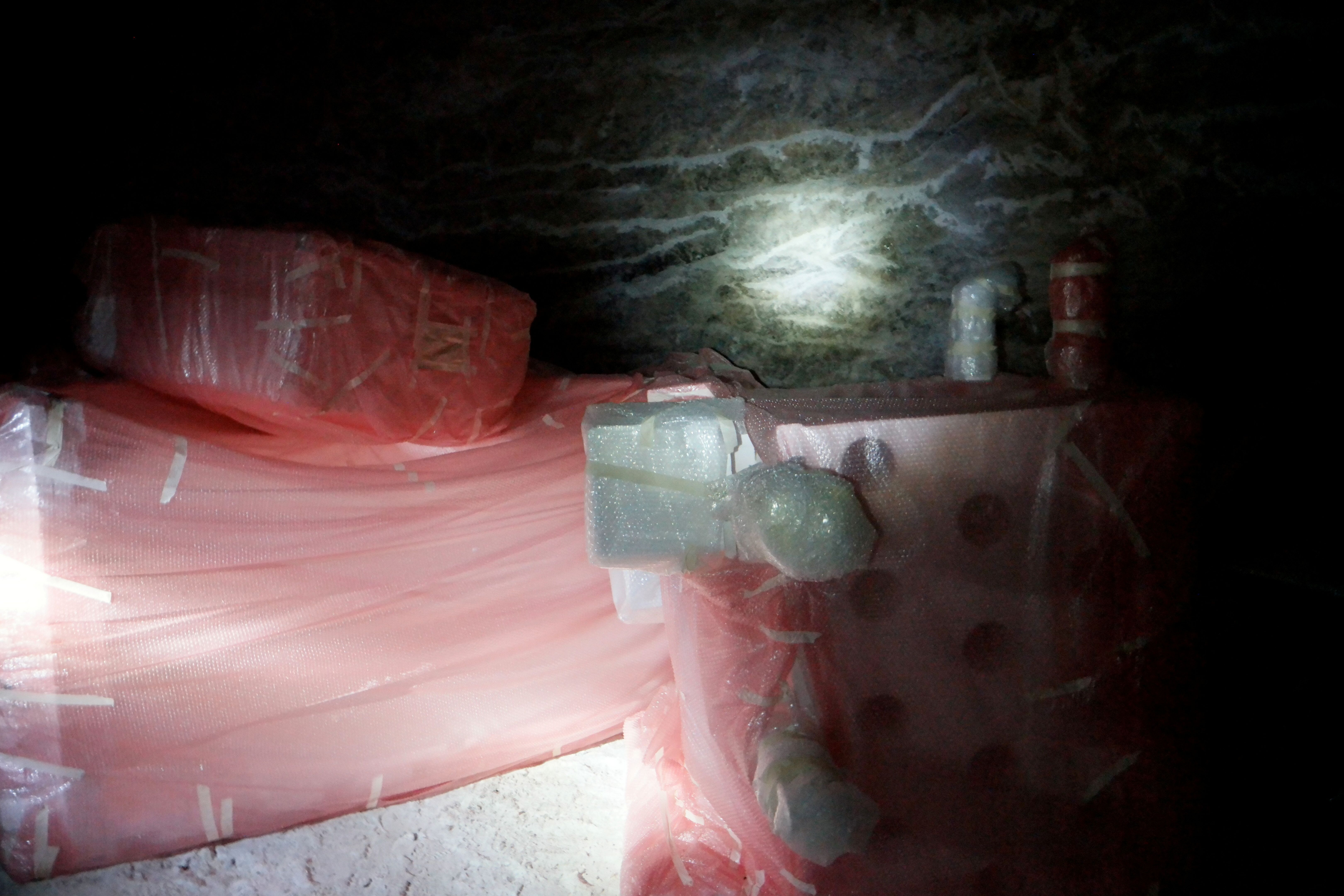
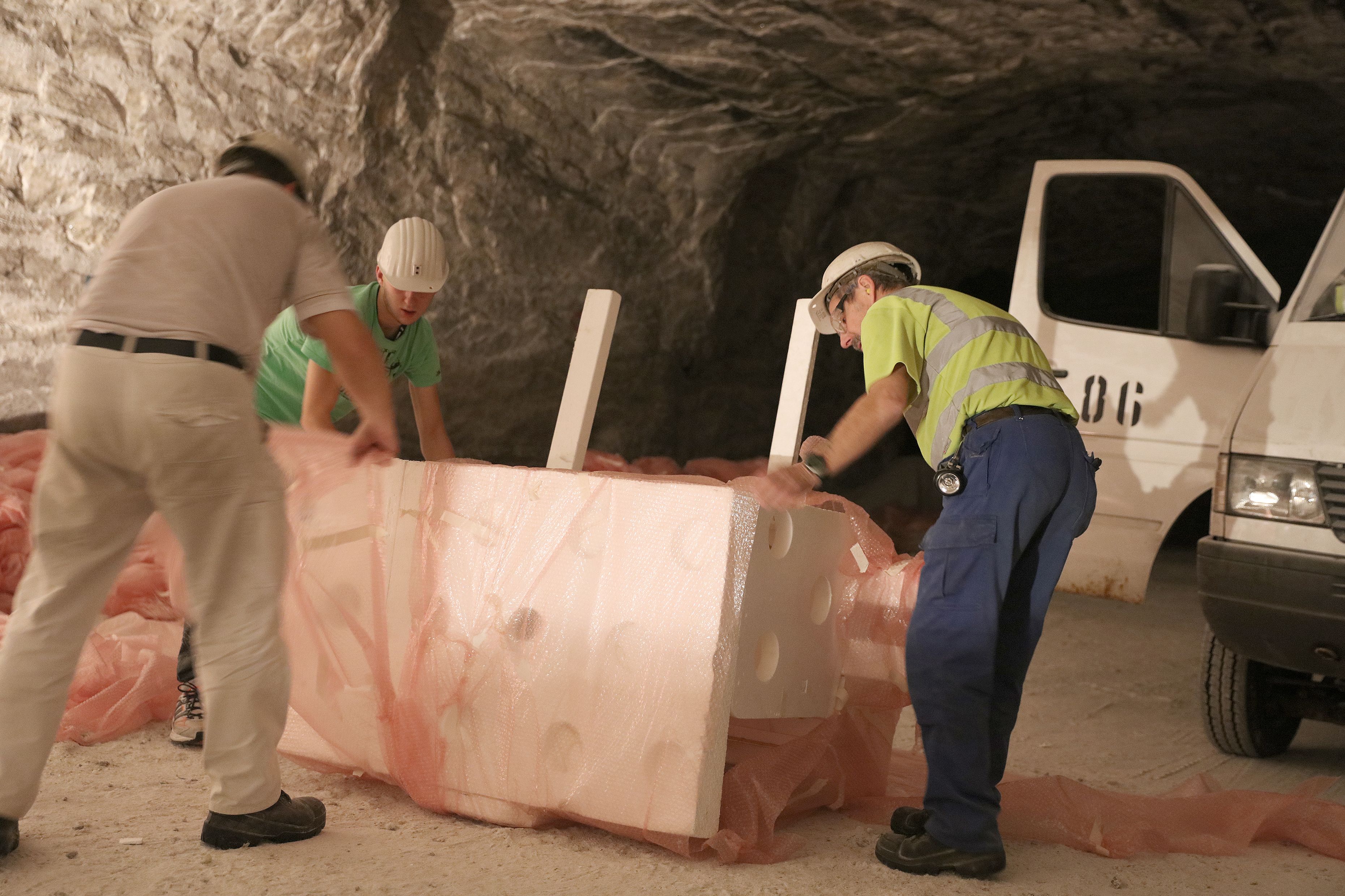
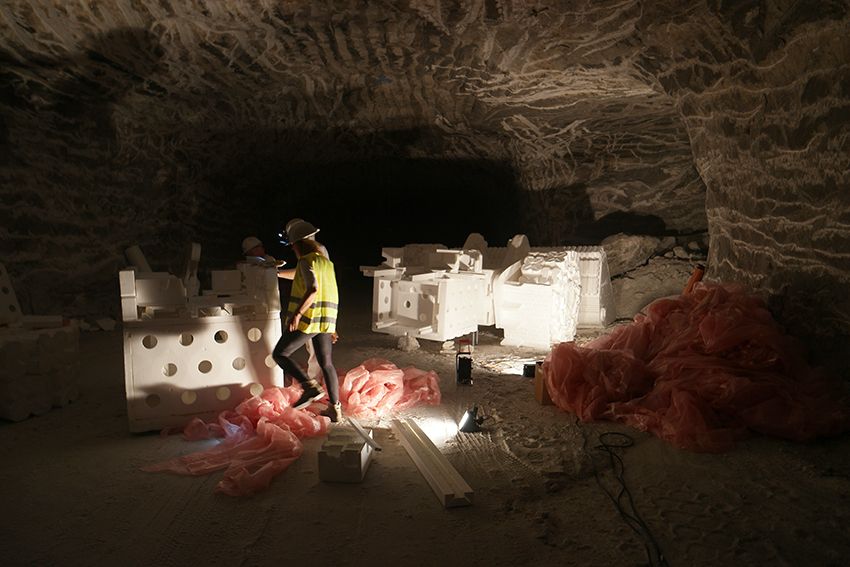
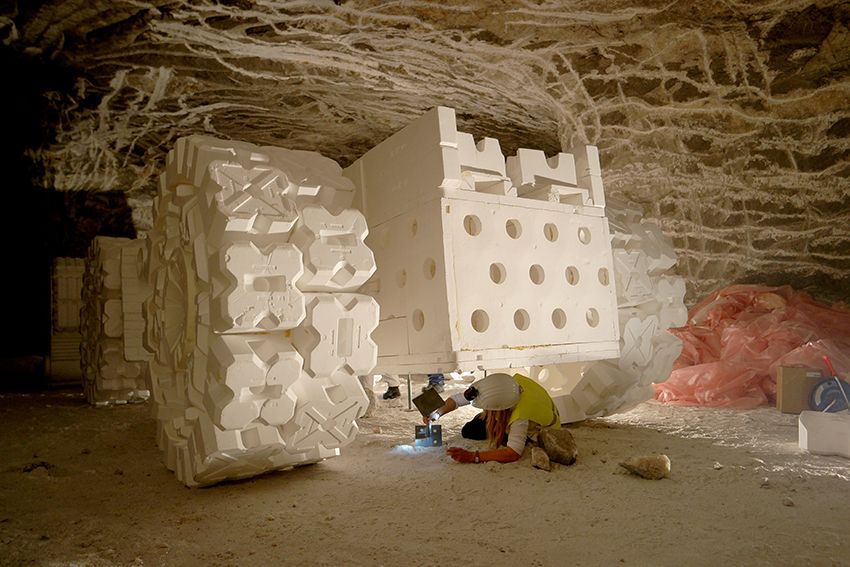
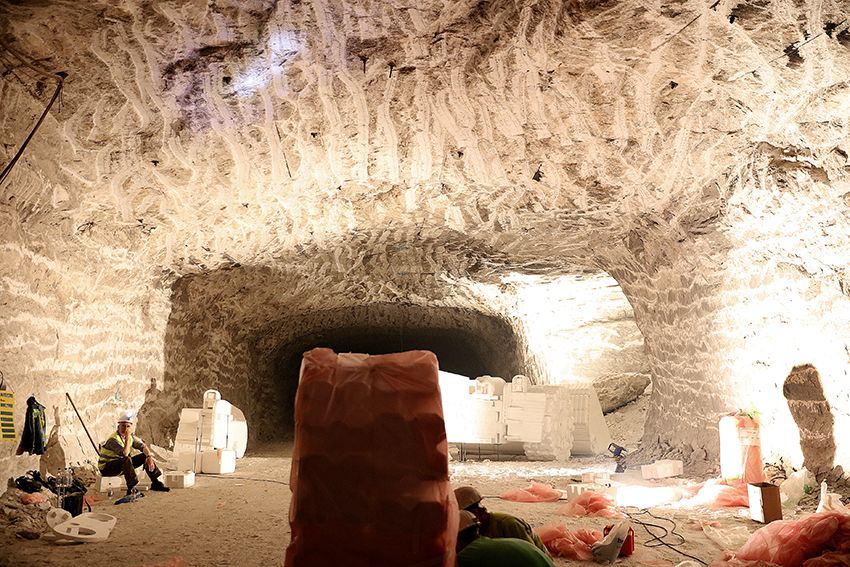
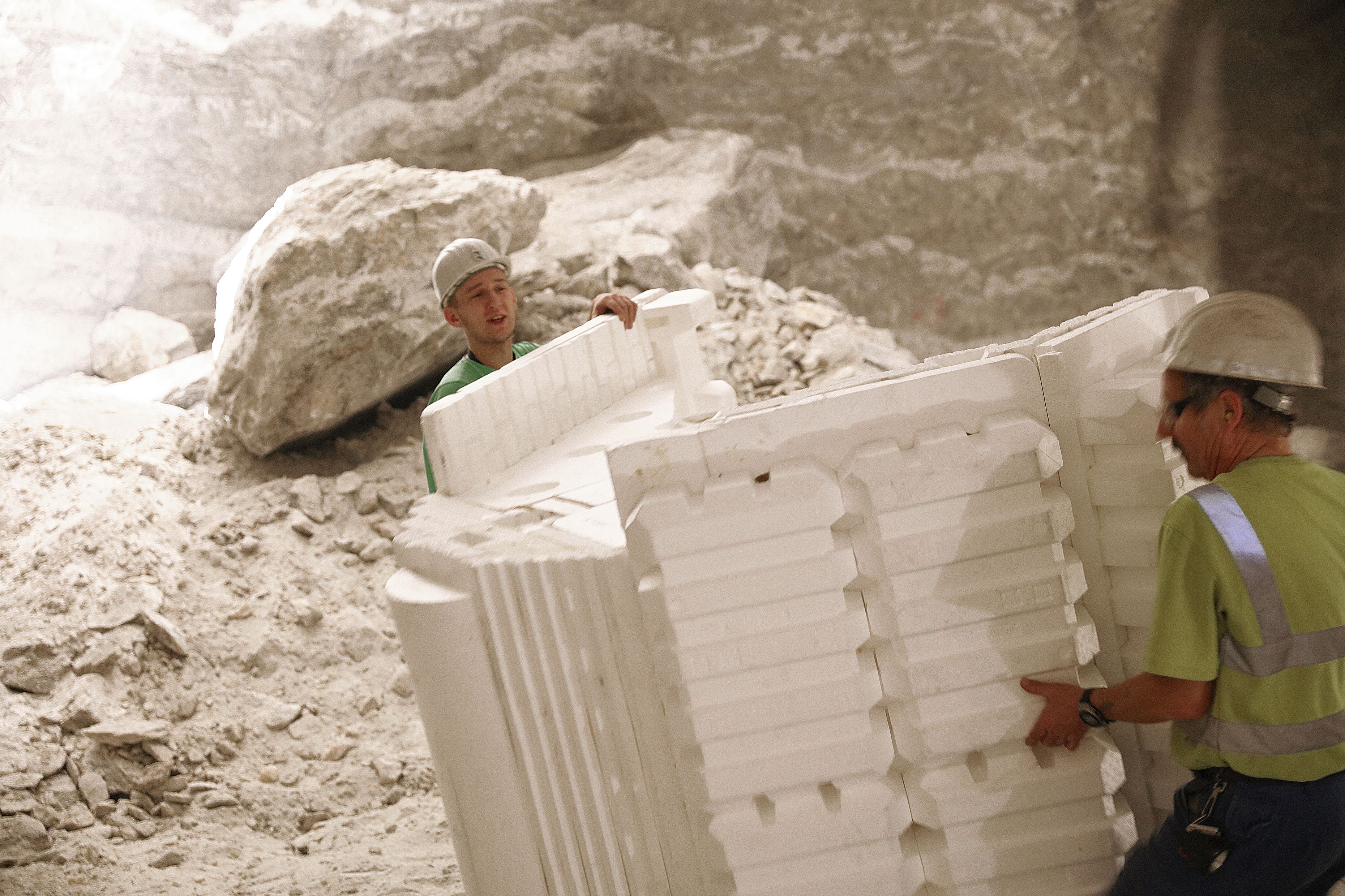
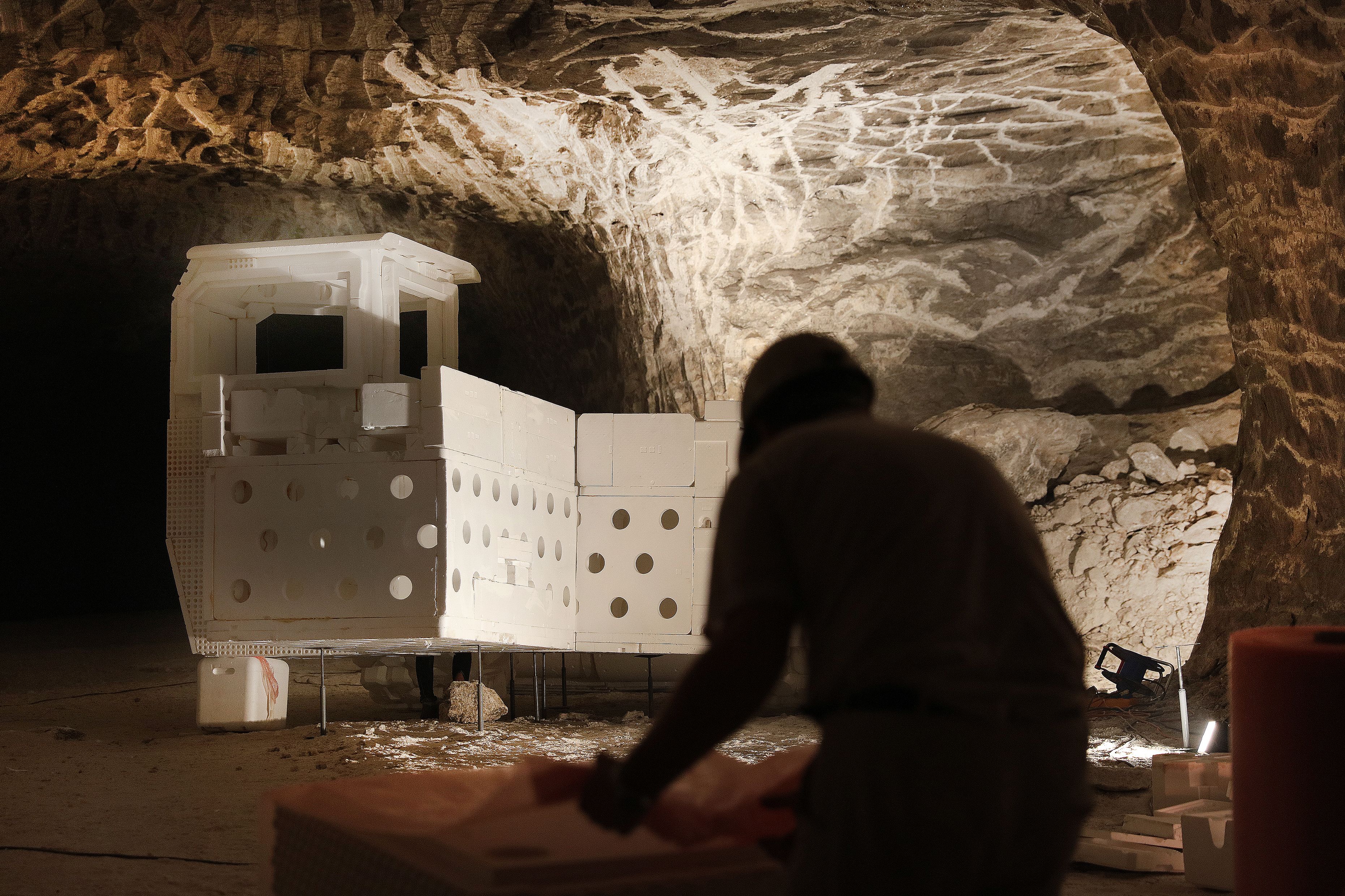
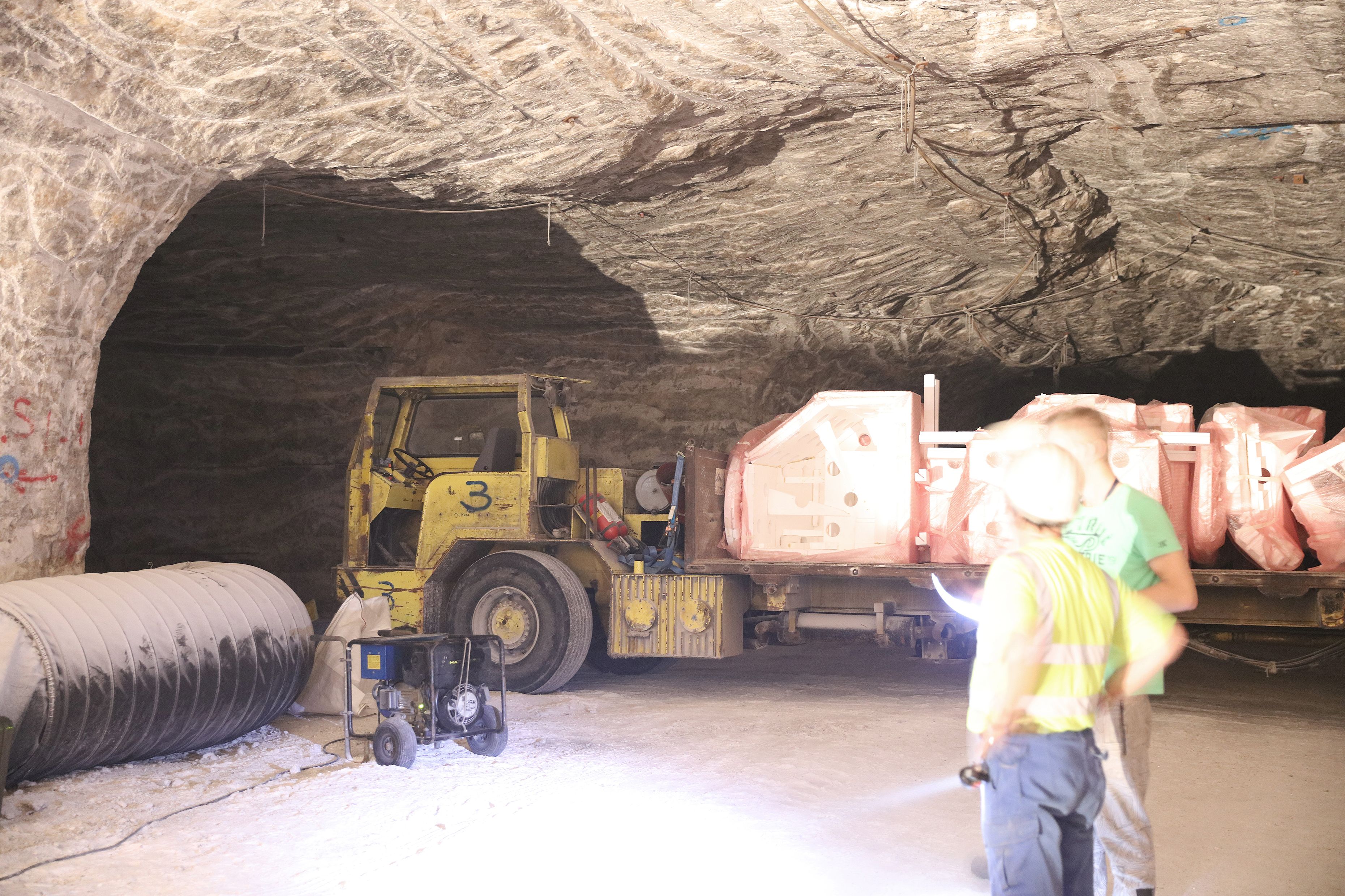

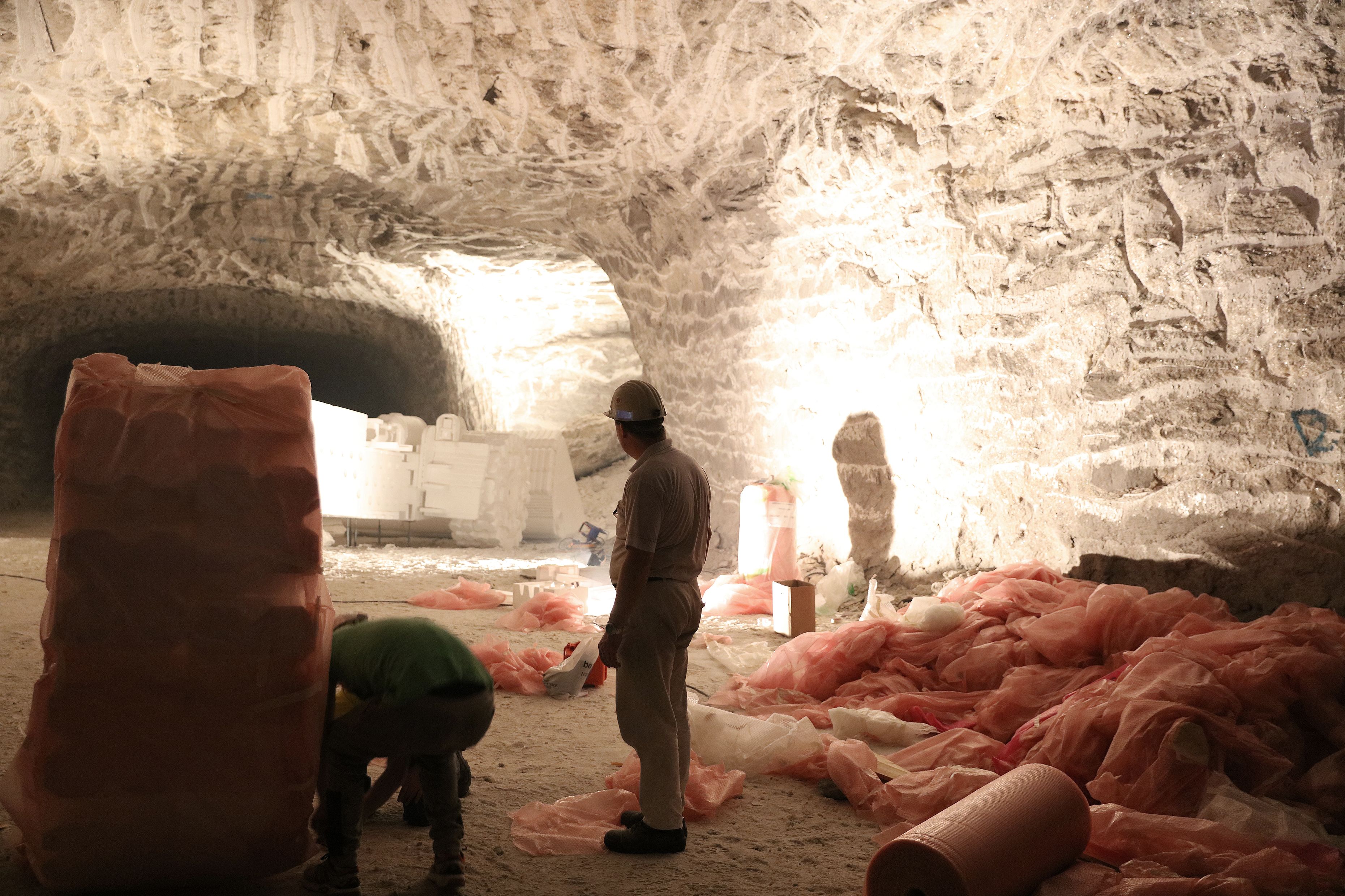
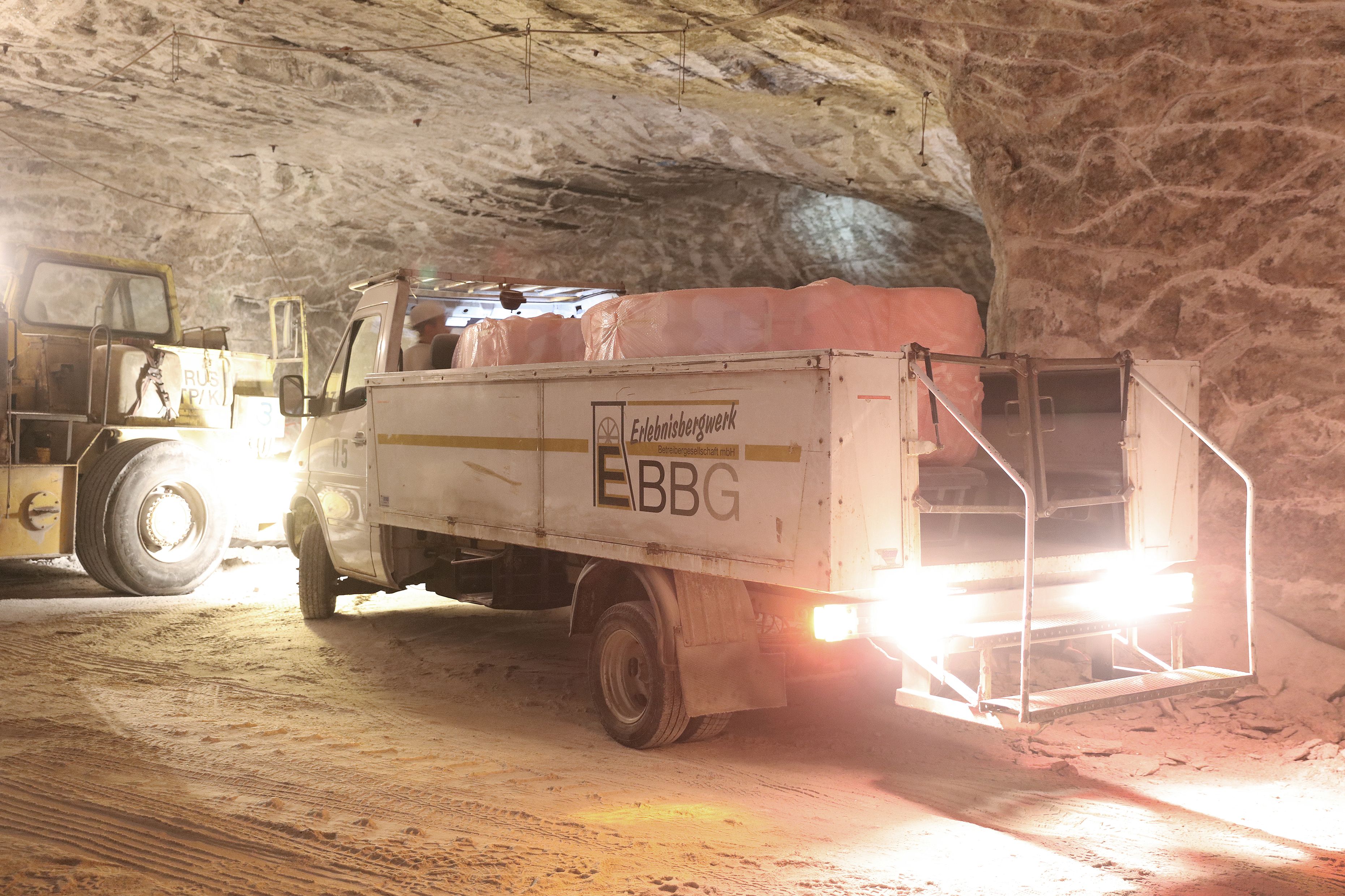
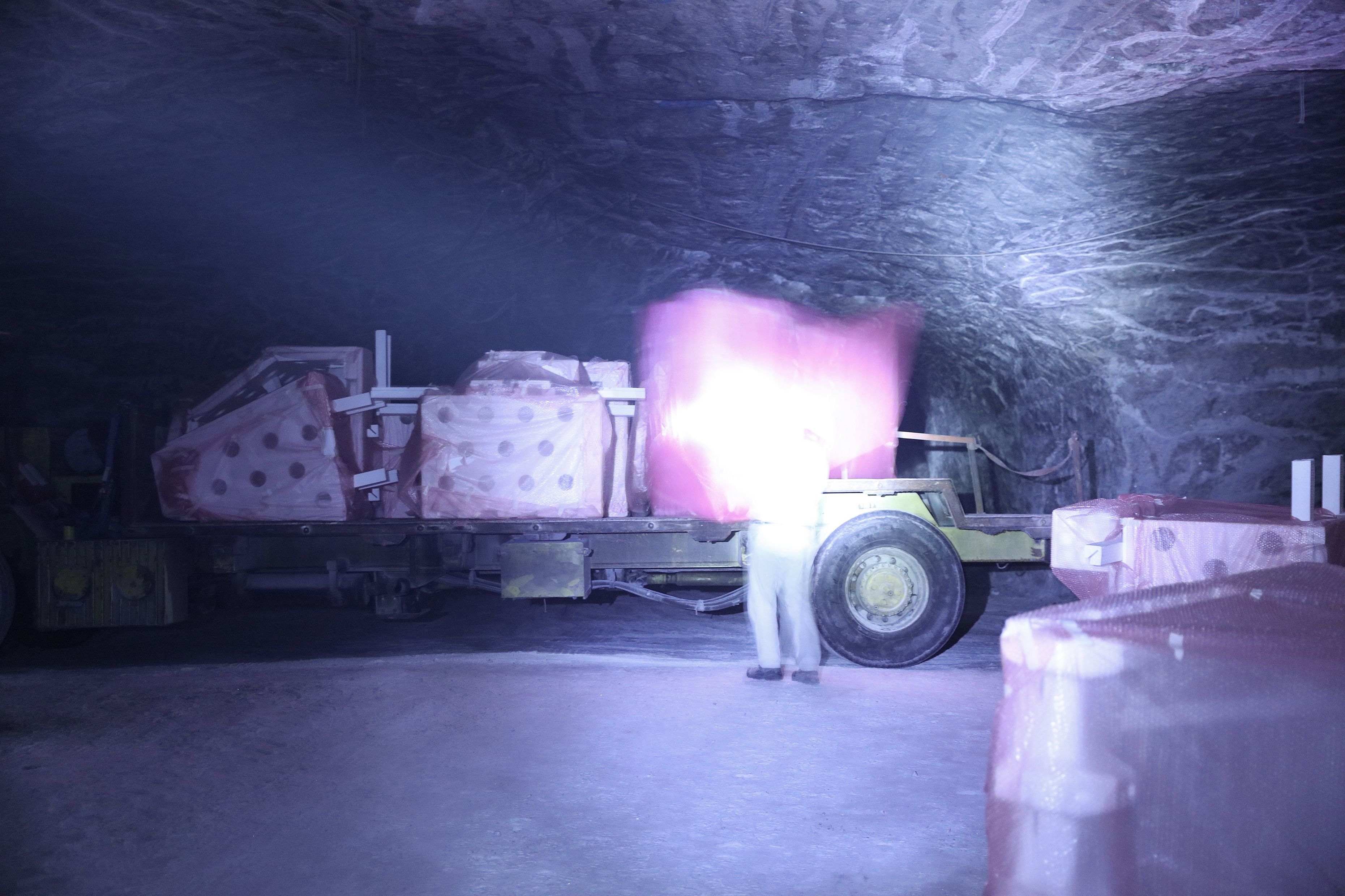
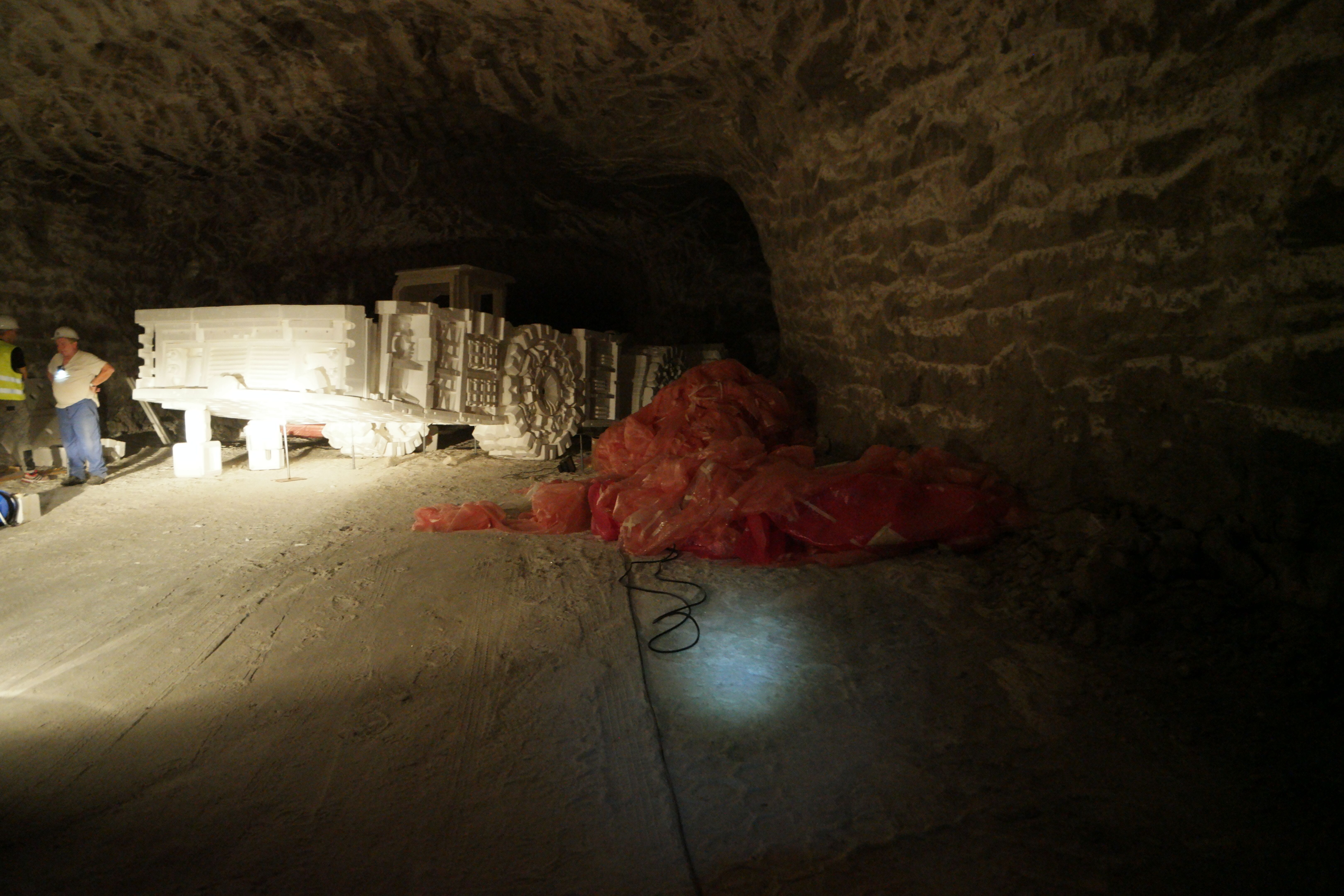
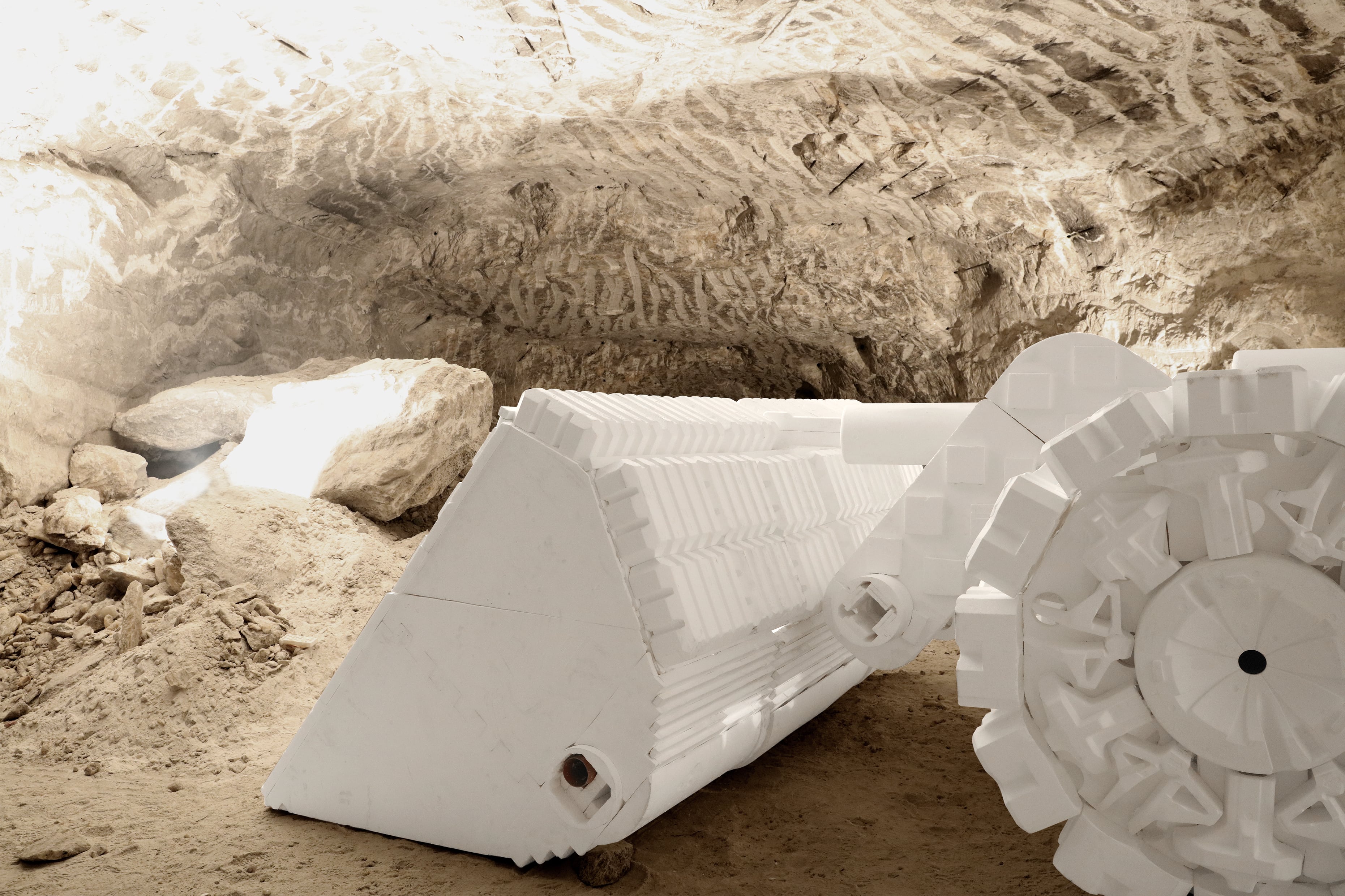

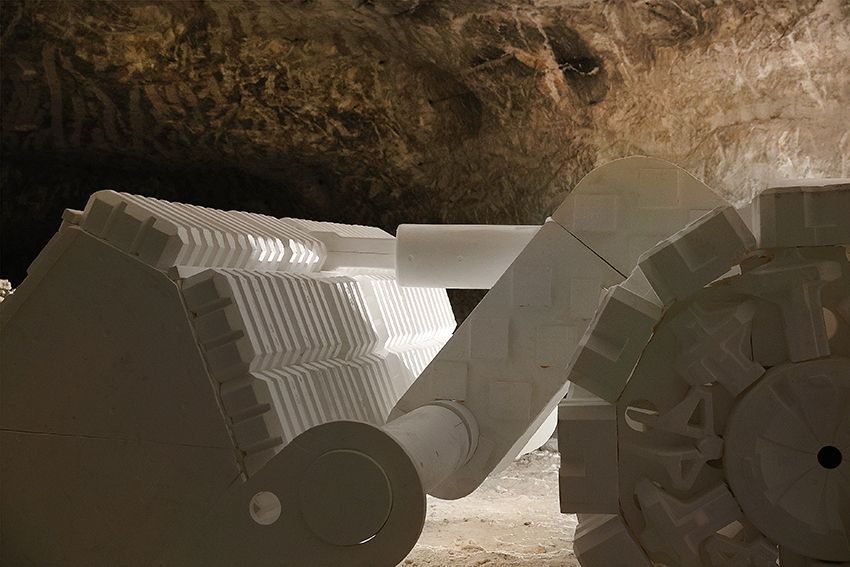
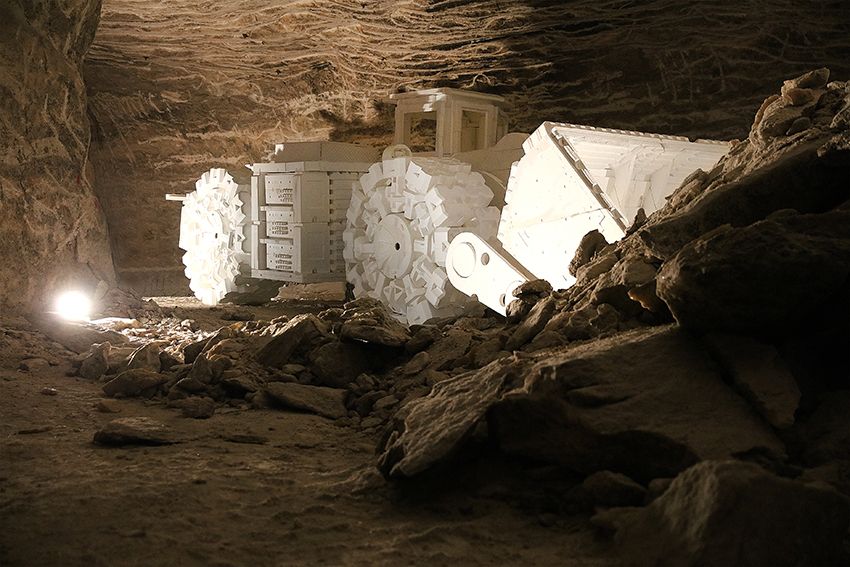
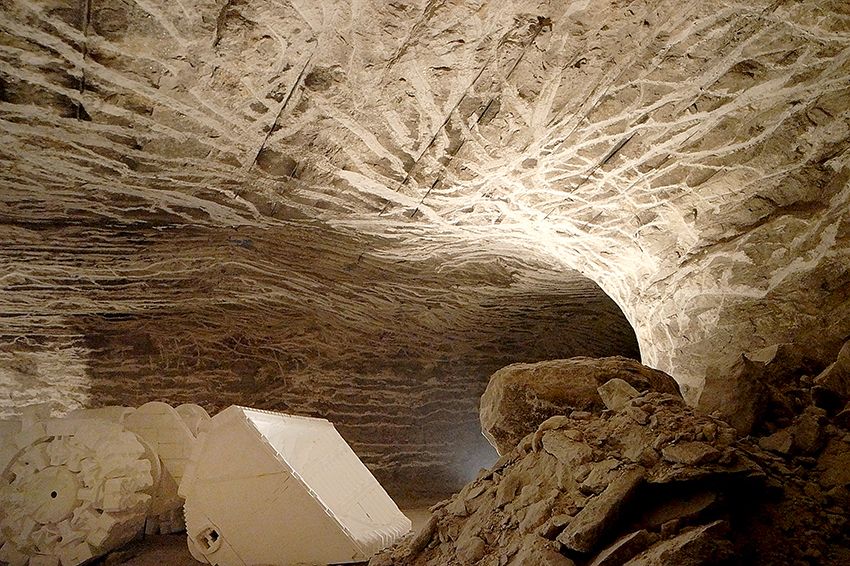
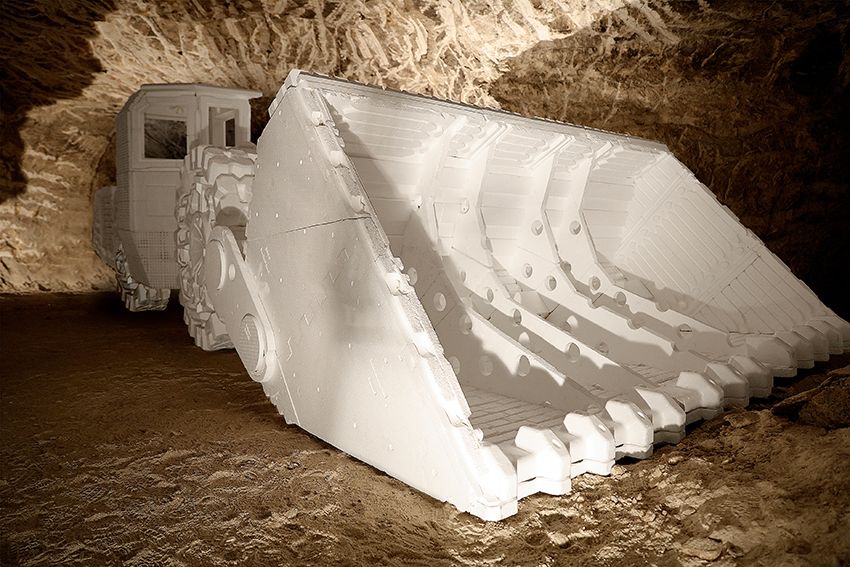
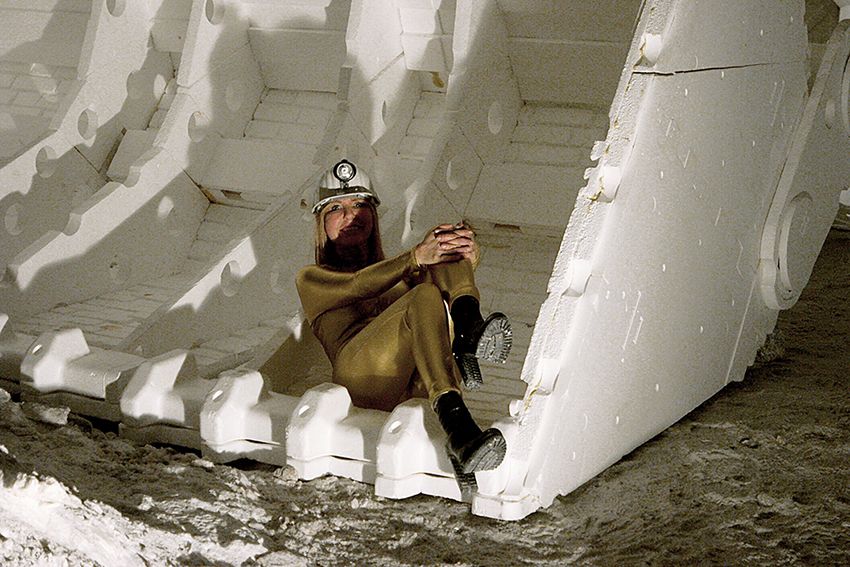
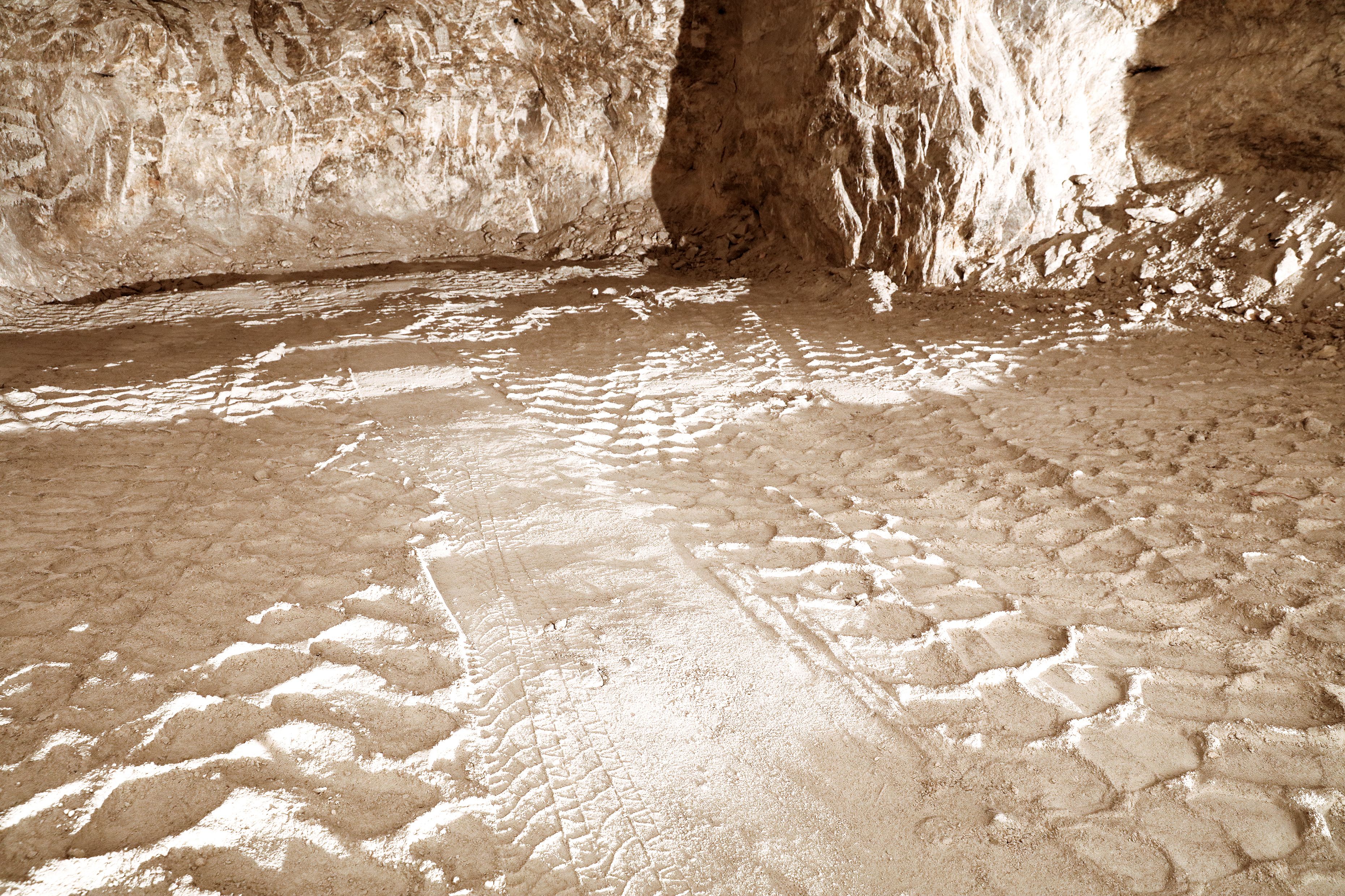
LHD Loader in the mine
Material: Styrofoam packaging
The “underworld” of our civilization, those invisible subterranean labyrinths, freshwater canals and sewers, mining tunnels, abandoned subway tunnels represent an exciting working environment which it is important to explore.
What lies beneath me? Layers of rock, sediment, witnesses of the long-forgotten past, the history and identity of a place.
It is worthwhile penetrating the depths with the tunnellers and miners who are unexpectedly ready and happy to let others dive into their world, share their everyday lives, to become inspired.
Their working world is characterized by enormous specialized machines that operate hidden from view and only rarely see daylight. What counts down there is relying on collaboration, that solidarity between those who command the underground dump trucks, drill rigs, tunneling machines and roadheaders. For these people, working underground is their passion.
At irregular intervals, high-tech beings race through the dark, dusty, usually very quiet tunnels. In doing so, they throw wondrous cones of light onto the walls, and, if you are lucky, you can observe their spotlights shine into a seemingly endless expanse that stirs up desires to pursue it.
During one such moment of longing, the spell was broken by an unusually flat, wasp-yellow, and surprisingly agile special vehicle disturbs the underworldly romanticism, the SLP-14H LHD loader.
In its insect-like shape it seemed inexpressibly powerful, threatening and at the same time elegant. A monster measuring 14.25 meters in length, 4.62 meters in width, but just 1.80 meters in height: a primeval crawler.
And thus, a dream began to take shape: to appropriate this machine, mirror it conceptually. This LHD loader needed to have a counterpart, one that should be made of Styrofoam packaging. The construction vehicle mechanics from the mining company helped me with my concept for the sculpture. They know everything about all underground equipment. Not just because they service the machines and keep them operational, but also because they have to assemble them. The gigantic machines are brought into the depths of the minedisassembled in narrow pit cages before being put together where they will spend the rest of their working lives.
In the studio the monster was reconstructed in its original size. It needed to be constructed in a modular fashion and capable of being dismantled into pieces each measuring 200x150x150 centimeters, to allow it to be transported into the “underworld” at a depth of 800 m in pit cages –just like its steel counterpart. On arrival it was driven around until a suitable shaft cabin was found for themonster.
Unpacking, setting up and aligning the sculpture. Never before had there been so much pink bubble wrap and flawless polystyrene in a cavern so deep underground. Bit by bit the construction machinery mechanics watched as their work equipment, or at least a bizarre, unusable, brilliant white version of it, rose up in front of them. This was not a working day for them, but an alienating excursion right in the middle of a familiar world.
In photographs the LHD loader sculpture looks like a huge toy car. Yet when you peer more closely, it becomes clear that it is in fact a new form of civilization waste –as though an invisible hand had swiftly copied the outward shape of something down to the last detail without understanding what it was for. On site the sculpture had to hold its ground next to its steel role models. But as it is made of 98 % air, it was only able to shine in the role of an anti-hero –despite being the same size and trying hard to strike in an impressive pose. However, this in turn made its role models appear less frightening and counteracted their masculine hybris.